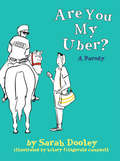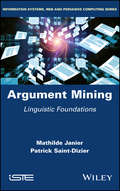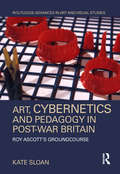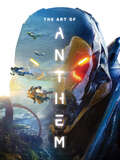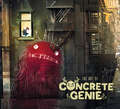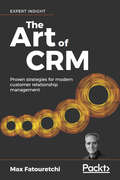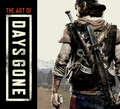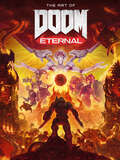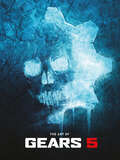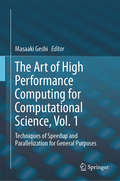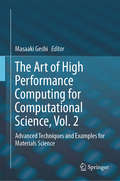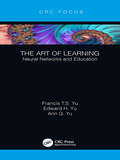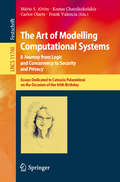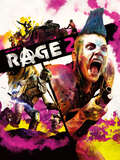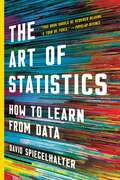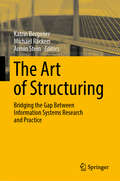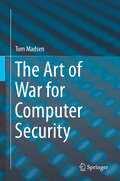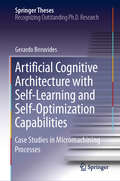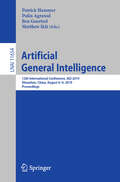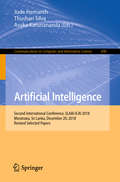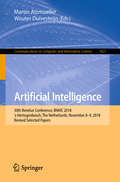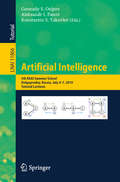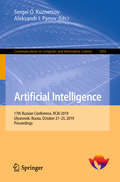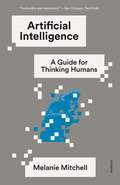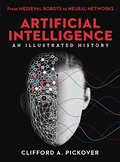- Table View
- List View
Are You My Uber?: A Parody
by Sarah Amelia DooleyWe've all been there. You call an Uber. The app says it has arrived, but . . . where is it? Where is your Uber?Are You My Uber? is a 21st Century parody of the 1960 P.D. Eastman children's book Are You My Mother? A man steps off the midnight bus at Port Authority. His name? Unknown. His goal? To find his Uber, an elusive Ford Taurus. Lost and alone in a new city, he steels himself and begins by passing right by the very object of his search. Hilarity ensues: the man proceeds to knock at the doors of an off-duty cab, a helicopter, a halal cart, and other vehicles increasing in their absurdity, willing to try anything to find his Uber.Paired with illustrations by Hilary Fitzgerald Campbell, co-illustrator of Feminist Fight Club, Sarah Dooley's hilarious imagined story is as ridiculous as it is relatable.
Argument Mining: Linguistic Foundations
by Mathilde Janier Patrick Saint-DizierThis book is an introduction to the linguistic concepts of argumentation relevant for argument mining, an important research and development activity which can be viewed as a highly complex form of information retrieval, requiring high-level natural language processing technology. While the first four chapters develop the linguistic and conceptual aspects of argument expression, the last four are devoted to their application to argument mining. These chapters investigate the facets of argument annotation, as well as argument mining system architectures and evaluation. How annotations may be used to develop linguistic data and how to train learning algorithms is outlined. A simple implementation is then proposed. The book ends with an analysis of non-verbal argumentative discourse. Argument Mining is an introductory book for engineers or students of linguistics, artificial intelligence and natural language processing. Most, if not all, the concepts of argumentation crucial for argument mining are carefully introduced and illustrated in a simple manner.
Art, Cybernetics and Pedagogy in Post-War Britain: Roy Ascott’s Groundcourse (Routledge Advances in Art and Visual Studies)
by Kate SloanThis is the first full-length study about the British artist Roy Ascott, one of the first cybernetic artists, with a career spanning seven decades to date. The book focuses on his early career, exploring the evolution of his early interests in communication in the context of the rich overlaps between art, science and engineering in Britain during the 1950s and 1960s. The first part of the book looks at Ascott’s training and early work. The second park looks solely at Groundcourse, Ascott’s extraordinary pedagogical model for visual arts and cybernetics which used an integrative and systems-based model, drawing in behaviourism, analogue machines, performance and games. Using hitherto unpublished photographs and documents, this book will establish a more prominent place for cybernetics in post-war British art.
The Art of Anthem
by Derek Watts Jonathan Warner Steve Kilt Ken FaircloughHundreds of pieces of art with commentary detailing the creation of BioWare's groundbreaking epic in an expertly designed hardcover volume!From the studio behind the hit franchises Dragon Age and Mass Effect comes the thrilling world of Anthem. Dark Horse Books and BioWare are proud to present The Art of Anthem, showcasing the grandeur and beauty of this dangerous new world.Filled with behind-the-scenes looks at four years of game production, original concept art, and exclusive commentary from developers, The Art of Anthem is a fantastic addition to any gamer fan's bookshelf!
The Art of Concrete Genie
by PixelOpusWalk among the mysterious streets of Denska and collect the real pages of artwork behind PixelOpus' endearing video game Concrete Genie!This art book studies the power of self-expression, creativity and the game's core fantasy of making anyone believe they can be an artist - just like the talented protagonist of the game, Ash. Return to the characters, monsters, and lore of Denska to uncover the secrets behind PixelOpus' 'living paint' mechanics that allow the walls of Denska to come to life with player creations. Witness a special, behind-the-scenes look at the development of Concrete Genie from the small and passionate team that brought it to life.From the developers of a truly empowering journey about oppression and creativity, Dark Horse Books and PixelOpus are delighted to present The Art of Concrete Genie! This art book collects heart-warming, magnificent illustrations for fans of Ash and his wildly varied 'living paint' creations within Concrete Genie.
The Art of CRM: Proven strategies for modern customer relationship management
by Max FatouretchiThis CRM masterclass gives you a proven approach to modern customer relationship managementKey FeaturesProven techniques to architect CRM systems that perform well, that are built on time and on budget, and that deliver value for many yearsCombines technical knowledge and business experience to provide a powerful guide to CRM implementationCovers modern CRM opportunities and challenges including machine learning, cloud hosting, and GDPR complianceBook DescriptionCRM systems have delivered huge value to organizations. This book shares proven and cutting-edge techniques to increase the power of CRM even further.In The Art of CRM, Max Fatouretchi shares his decades of experience building successful CRM systems that make a real difference to business performance.Through clear processes, actionable advice, and informative case studies, The Art of CRM teaches you to design successful CRM systems for your clients.Fatouretchi, founder of Academy4CRM institute, draws on his experience over 20 years and 200 CRM implementations worldwide.Bringing CRM bang up to date, The Art of CRM shows how to add AI and machine learning, ensure compliance with GDPR, and choose between on-premise, cloud, and hybrid hosting solutions.If you’re looking for an expert guide to real-world CRM implementations, this book is for you.What you will learnDeliver CRM systems that are on time, on budget, and bring lasting value to organizationsBuild CRM that excels at operations, analytics, and collaborationGather requirements effectively: identify key pain points, objectives, and functional requirementsDevelop customer insight through 360-degree client view and client profilingTurn customer requirements into a CRM design specArchitect your CRM platformBring machine learning and artificial intelligence into your CRM systemEnsure compliance with GDPR and other critical regulationsChoose between on-premise, cloud, and hybrid hosting solutionsWho this book is forCRM practitioners who want to update their work with new, proven techniques and approaches
The Art of Days Gone
by Bend StudioA masterfully designed book collecting over 200 pages of art and commentary from the creators of the brutal and thrilling Days Gone!Set in the beautiful and rugged landscape of the Pacific Northwest high desert, a global pandemic has wreaked havoc on everyone and everything in sight. Now, former outlaw biker turned bounty hunter Deacon St. John must fight for survival against all odds. Witness the creation of Deacon's epic adventure with The Art of Days Gone! From Dark Horse Books and Bend Studio (Syphon Filter, Resistance: Retribution, Uncharted: Golden Abyss), The Art of Days Gone takes an unflinching look at the lovingly detailed production of this hugely anticipated game, featuring hundreds of pieces of concept art and exclusive commentary directly from the team who created it!
The Art of DOOM: Eternal
by Bethesda Softworks ID SOFTWAREA full-color digital art book containing concept art and commentary from the development of DOOM Eternal, the next entry in the iconic first-person shooter series.The newest chapter in the quintessential game franchise from id Software is here. Witness DOOM Eternal! This epic volume explores the art and development of the hotly anticipated sequel to the 2016 Game Award-winner for Best Action Game! Explore the twisted demonic invasion of Earth, the cultist UAC facilities, and plunge into otherworldly and unknown locations new to the DOOM universe. Admire the dangerous glimmering edges of the Slayer's arsenal and armor. Examine the ancient designs and breeds of Hell's soldiers and lords--all in gloriously designed full color images straight from the files of the game's artists themselves! Dark Horse Books and id Software join forces to present The Art of DOOM Eternal, encompassing every detail you've come to love from DOOM!
The Art of Gears 5
by The Coalition StudioOver 200 pages of gorgeous art that delves into the characters, settings, and equipment of Gears 5--all collected in a full-color digital tome!Unearth the origins of the Swarm and journey across the war-torn and diverse landscapes of Sera while exploring art from the first Gears game to be headed by Kait Diaz. This bold new chapter in the Gears of War series is examined in fastidious detail, chronicling the development of the action-packed game with art that spans from early concepts to polished renders. Dark Horse Books and The Coalition proudly join to present The Art of Gears 5, diving into the sunken ruins of the ancient Locust horde, and peering at in-depth collections of art from the enthralling world, captivating characters, and distinctive weapons of Gears 5!
The Art of High Performance Computing for Computational Science, Vol. 1: Techniques of Speedup and Parallelization for General Purposes
by Masaaki GeshiThis book provides basic and practical techniques of parallel computing and related methods of numerical analysis for researchers who conduct numerical calculation and simulation. Although the techniques provided in this book are field-independent, these methods can be used in fields such as physics, chemistry, biology, earth sciences, space science, meteorology, disaster prevention, and manufacturing. In particular, those who develop software code in these areas will find this book useful. The contents are suitable for graduate students and researchers in computational science rather than novices at programming or informed experts in computer science.Starting with an introduction to the recent trends in computer architecture and parallel processing, Chapter 1 explains the basic knowledge of speedup programs with simple examples of numerical computing. Chapters 2 – 4 detail the basics of parallel programming, the message passing interface (MPI), and OpenMP and discuss hybrid parallelization techniques. Showing an actual example of adaptation, Chapter 5 gives an overview of performance tuning and communication optimizations. To deal with dense matrix calculations, Chapter 6 details the basics and practice of linear algebra calculation libraries BLAS and LAPACK, including some examples that can be easily reproduced by readers using free software. Focusing on sparse matrix calculations, Chapter 7 explains high performance algorithms for numerical linear algebra. Chapter 8 introduces the fast Fourier transform in large-scale systems from the basics. Chapter 9 explains optimization and related topics such as debug methods and version control systems. Chapter 10 discusses techniques for increasing computation accuracy as an essential topic in numerical calculation. This is the first of the two volumes that grew out of a series of lectures in the K computer project in Japan. The second volume will focus on advanced techniques and examples of applications in materials science.
The Art of High Performance Computing for Computational Science, Vol. 2: Advanced Techniques and Examples for Materials Science
by Masaaki GeshiThis book presents advanced and practical techniques for performance optimization for highly parallel processing. Featuring various parallelization techniques in material science, it is a valuable resource for anyone developing software codes for computational sciences such as physics, chemistry, biology, earth sciences, space science, weather, disaster prevention and manufacturing, as well as for anyone using those software codes.Chapter 1 outlines supercomputers and includes a brief explanation of the history of hardware. Chapter 2 presents procedures for performance evaluation, while Chapter 3 describes the set of tuned applications in materials science, nanoscience and nanotechnology, earth science and engineering on the K computer. Introducing the order-N method, based on density functional theory (DFT) calculation, Chapter 4 explains how to extend the applicability of DFT to large-scale systems by reducing the computational complexity. Chapter 5 discusses acceleration and parallelization in classical molecular dynamics simulations, and lastly, Chapter 6 explains techniques for large-scale quantum chemical calculations, including the order-N method. This is the second of the two volumes that grew out of a series of lectures in the K computer project in Japan. The first volume addresses more basic techniques, and this second volume focuses on advanced and concrete techniques.
The Art of Learning: Neural Networks and Education
by Francis T.S. Yu Edward H. Yu Ann G. YuThis book presents the idea that innovative ways of teaching and learning are very essential to retention and growth. Presented in 15 sections, the book starts with the common sense training on education and moves on to neural network operation. Throughout the book, the art of learning, associative, cognitive, and creative learning are stated and defined. Learning simplicity, information content as related to neural network learning are discussed. The author also discusses neural plasticity and adaptability in smarter neural networks. If we know our human brain’s basic abilities and limitation then a better educational methods can be implemented. Presents the idea that innovative ways of teaching and learning are very essential to retention and growth Discusses major differences and constraints between neural network and computer Presents the significances of learning simplicity and information content as related to neural network learning are included Stresses the neural network learning capabilities and limitations and their role in developing more efficient learning techniques
The Art of Modelling Computational Systems: Essays Dedicated to Catuscia Palamidessi on the Occasion of Her 60th Birthday (Lecture Notes in Computer Science #11760)
by Mário S. Alvim Kostas Chatzikokolakis Carlos Olarte Frank ValenciaThis Festschrift was published in honor of Catuscia Palamidessi on the occasion of her 60th birthday.It features 6 laudations, which are available in the front matter of the volume, and 25 papers by close collaborators and friends. The papers are organized in topical sections named: concurrency; logic and constraint programming; security and privacy; and models and puzzles.These contributions are a tribute to Catuscia Palamidessi’s intellectual depth, vision, passion for science, and tenacity in solving technical problems. They also reflect the breadth and impact of her work. Her scientific interests include, in chronological order, principles of programming languages, concurrency theory, security, and privacy.
The Art of RAGE 2
by Avalanche StudiosAn outrageous collection of art and commentary from the development of id Software and Avalanche Studios' dystopian first-person-shooter, RAGE 2!Delving into the rebellious world of the Wasteland, this volume examines the most intense moments of RAGE 2 in an extensive fusion of art and commentary! Explore the split scenery of lush overgrowth and desolate deserts in concepts and renders from across the incredible setting. This wicked collection details the game's wide-open world, insane characters, and big f%$@ing guns--all with exclusive commentary from the game's developers.Dark Horse Books joins with Bethesda Softworks and id Software, the creators of the first-person shooter genre, to present The Art of RAGE 2. Don't miss out on this vital addition to any wild wastelander's collection.
The Art of Statistics: How to Learn from Data
by David SpiegelhalterThe definitive guide to statistical thinkingStatistics are everywhere, as integral to science as they are to business, and in the popular media hundreds of times a day. In this age of big data, a basic grasp of statistical literacy is more important than ever if we want to separate the fact from the fiction, the ostentatious embellishments from the raw evidence -- and even more so if we hope to participate in the future, rather than being simple bystanders.In The Art of Statistics, world-renowned statistician David Spiegelhalter shows readers how to derive knowledge from raw data by focusing on the concepts and connections behind the math. Drawing on real world examples to introduce complex issues, he shows us how statistics can help us determine the luckiest passenger on the Titanic, whether a notorious serial killer could have been caught earlier, and if screening for ovarian cancer is beneficial. The Art of Statistics not only shows us how mathematicians have used statistical science to solve these problems -- it teaches us how we too can think like statisticians. We learn how to clarify our questions, assumptions, and expectations when approaching a problem, and -- perhaps even more importantly -- we learn how to responsibly interpret the answers we receive.Combining the incomparable insight of an expert with the playful enthusiasm of an aficionado, The Art of Statistics is the definitive guide to stats that every modern person needs.
The Art of Structuring: Bridging the Gap Between Information Systems Research and Practice
by Katrin Bergener Michael Räckers Armin SteinStructuring, or, as it is referred to in the title of this book, the art of structuring, is one of the core elements in the discipline of Information Systems. While the world is becoming increasingly complex, and a growing number of disciplines are evolving to help make it a better place, structure is what is needed in order to understand and combine the various perspectives and approaches involved. Structure is the essential component that allows us to bridge the gaps between these different worlds, and offers a medium for communication and exchange. The contributions in this book build these bridges, which are vital in order to communicate between different worlds of thought and methodology – be it between Information Systems (IS) research and practice, or between IS research and other research disciplines. They describe how structuring can be and should be done so as to foster communication and collaboration. The topics covered reflect various layers of structure that can serve as bridges: models, processes, data, organizations, and technologies. In turn, these aspects are complemented by visionary outlooks on how structure influences the field.
The Art of War for Computer Security
by Tom MadsenIn this book the author draws inspiration from Sun Tzu's Art of War, a work that explains conflict between nations, and he applies this to the computer security setting, examining how we should consider protecting information systems from accidents or malicious attacks. The author first briefly introduces Sun Tzu. Then each chapter in the book takes its inspiration from an original title in The Art of War, where the author offers a general introduction to the content and then describes its application in a cybersecurity setting. These chapters cover estimates; waging war; offensive strategy; how you prepare for an attack; energy; weaknesses and strengths; the variables that need consideration before embarking on a war; how infrastructure is related to the concept of ground; attack by fire or how skilled attackers hide behind noise; and employing secret agents. The book will be interesting for computer security researchers and professionals who would like some grounding in a security mindset.
Artificial Cognitive Architecture with Self-Learning and Self-Optimization Capabilities: Case Studies In Micromachining Processes (Springer Theses)
by Gerardo BeruvidesThis book introduces three key issues: (i) development of a gradient-free method to enable multi-objective self-optimization; (ii) development of a reinforcement learning strategy to carry out self-learning and finally, (iii) experimental evaluation and validation in two micromachining processes (i.e., micro-milling and micro-drilling). The computational architecture (modular, network and reconfigurable for real-time monitoring and control) takes into account the analysis of different types of sensors, processing strategies and methodologies for extracting behavior patterns from representative process’ signals. The reconfiguration capability and portability of this architecture are supported by two major levels: the cognitive level (core) and the executive level (direct data exchange with the process). At the same time, the architecture includes different operating modes that interact with the process to be monitored and/or controlled. The cognitive level includes three fundamental modes such as modeling, optimization and learning, which are necessary for decision-making (in the form of control signals) and for the real-time experimental characterization of complex processes. In the specific case of the micromachining processes, a series of models based on linear regression, nonlinear regression and artificial intelligence techniques were obtained. On the other hand, the executive level has a constant interaction with the process to be monitored and/or controlled. This level receives the configuration and parameterization from the cognitive level to perform the desired monitoring and control tasks.
Artificial General Intelligence: 12th International Conference, AGI 2019, Shenzhen, China, August 6–9, 2019, Proceedings (Lecture Notes in Computer Science #11654)
by Patrick Hammer Pulin Agrawal Ben Goertzel Matthew IkléThis book constitutes the refereed proceedings of the 12th International Conference on Artificial General Intelligence, AGI 2019, held in Shenzhen, China, in August 2019. The 16 full papers and 5 poster papers presented in this book were carefully reviewed and selected from 30 submissions. The papers are covering AGI architectures, discussing mathematical foundations, philosophical foundations, safety and ethics, and developing ideas from neuroscience and cognitive science.
Artificial Intelligence: Second International Conference, SLAAI-ICAI 2018, Moratuwa, Sri Lanka, December 20, 2018, Revised Selected Papers (Communications in Computer and Information Science #890)
by Jude Hemanth Thushari Silva Asoka KarunanandaThis book constitutes the refereed proceedings of the Second International Conference, SLAAI-ICAI 2018, held in Moratuwa, Sri Lanka, in December 2018.The 32 revised full papers presented were carefully reviewed and selected from numerous submissions. The papers are organized in the following topical sections: intelligence systems; neural networks; game theory; ontology engineering; natural language processing; agent based system; signal and image processing.
Artificial Intelligence: 30th Benelux Conference, BNAIC 2018, ‘s-Hertogenbosch, The Netherlands, November 8–9, 2018, Revised Selected Papers (Communications in Computer and Information Science #1021)
by Martin Atzmueller Wouter DuivesteijnThis book contains a selection of the best papers of the 30th Benelux Conference on Artificial Intelligence, BNAIC 2018, held in ‘s-Hertogenbosch, The Netherlands, in November 2018. The 9 full papers and 3 short papers presented in this volume were carefully reviewed and selected from 31 submissions. They address various aspects of artificial intelligence such as natural language processing, agent technology, game theory, problem solving, machine learning, human-agent interaction, AI and education, and data analysis.
Artificial Intelligence: 5th RAAI Summer School, Dolgoprudny, Russia, July 4–7, 2019, Tutorial Lectures (Lecture Notes in Computer Science #11866)
by Gennady S. Osipov Aleksandr I. Panov Konstantin S. YakovlevThis volume contains selected tutorial and young scientist school papers of the 5th RAAI Summer School on Artificial Intelligence, held in July 2019 at Institute of Physics and Technology (MIPT) campus in Dolgoprudny, a suburb of Moscow, Russia. The 11 chapters in this volume present papers focusing on various important aspects of Multiagent systems; Behavior planning; Natural language processing; Modeling of reasoning; and Machine learning and data analysis.
Artificial Intelligence: 17th Russian Conference, RCAI 2019, Ulyanovsk, Russia, October 21–25, 2019, Proceedings (Communications in Computer and Information Science #1093)
by Sergei O. Kuznetsov Aleksandr I. PanovThis book constitutes the proceedings of the 17th Russian Conference on Artificial Intelligence, RCAI 2019, held in Ulyanovsk, Russia, in October 2019. The 23 full papers presented along with 7 short papers in this volume were carefully reviewed and selected from 130 submissions. The conference deals with a wide range of topics, including multi-agent systems, intelligent robots and behaviour planning; automated reasoning and data mining; natural language processing and understanding of texts; fuzzy models and soft computing; intelligent systems and applications.
Artificial Intelligence: A Guide for Thinking Humans (Pelican Bks.)
by Melanie MitchellNo recent scientific enterprise has proved as alluring, terrifying, and filled with extravagant promise and frustrating setbacks as artificial intelligence. The award-winning author Melanie Mitchell, a leading computer scientist, now reveals AI’s turbulent history and the recent spate of apparent successes, grand hopes, and emerging fears surrounding it.In Artificial Intelligence, Mitchell turns to the most urgent questions concerning AI today: How intelligent—really—are the best AI programs? How do they work? What can they actually do, and when do they fail? How humanlike do we expect them to become, and how soon do we need to worry about them surpassing us? Along the way, she introduces the dominant models of modern AI and machine learning, describing cutting-edge AI programs, their human inventors, and the historical lines of thought underpinning recent achievements. She meets with fellow experts such as Douglas Hofstadter, the cognitive scientist and Pulitzer Prize–winning author of the modern classic Gödel, Escher, Bach, who explains why he is “terrified” about the future of AI. She explores the profound disconnect between the hype and the actual achievements in AI, providing a clear sense of what the field has accomplished and how much further it has to go. Interweaving stories about the science of AI and the people behind it, Artificial Intelligence brims with clear-sighted, captivating, and accessible accounts of the most interesting and provocative modern work in the field, flavored with Mitchell’s humor and personal observations. This frank, lively book is an indispensable guide to understanding today’s AI, its quest for “human-level” intelligence, and its impact on the future for us all.
Artificial Intelligence: From Medieval Robots to Neural Networks (Union Square & Co. Illustrated Histories)
by Clifford A. Pickover“This is an addictive stroll through the annals of artificial intelligence, highlighting almost 100 innovations developed between 1300 BCE and 2018” (Booklist).From medieval robots and Boolean algebra to facial recognition, artificial neural networks, and adversarial patches, this fascinating history takes readers on a lively tour through the world of artificial intelligence. Award–winning author Clifford A. Pickover (The Math Book, The Physics Book, Death & the Afterlife) explores the historic and current applications of AI in such diverse fields as computing, medicine, popular culture, mythology, and philosophy, and considers the enduring threat to humanity should AI grow out of control. Across 100 illustrated entries, Pickover provides an entertaining and informative look into when artificial intelligence began, how it developed, where it’s going, and what it means for the future of human-machine interaction.“An enjoyable diversion to read cover to cover, follow along common strands, or dip into for random bits.” —Booklist
